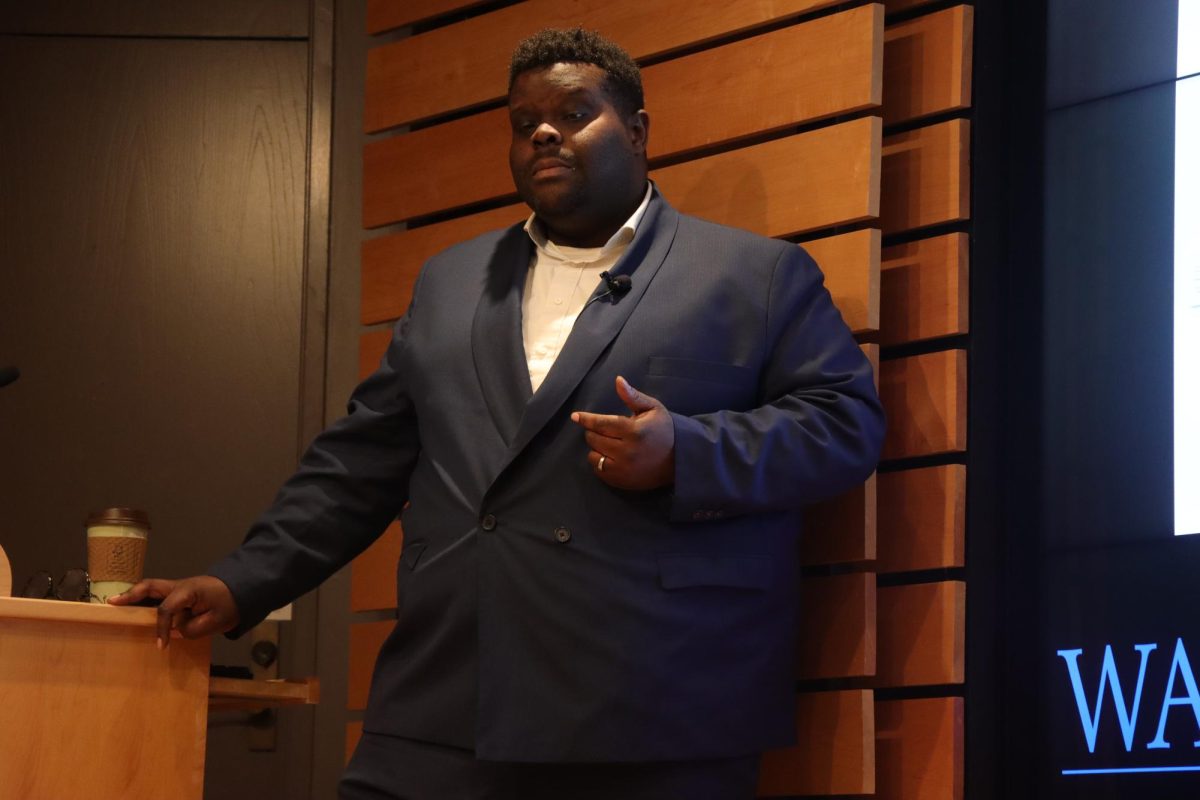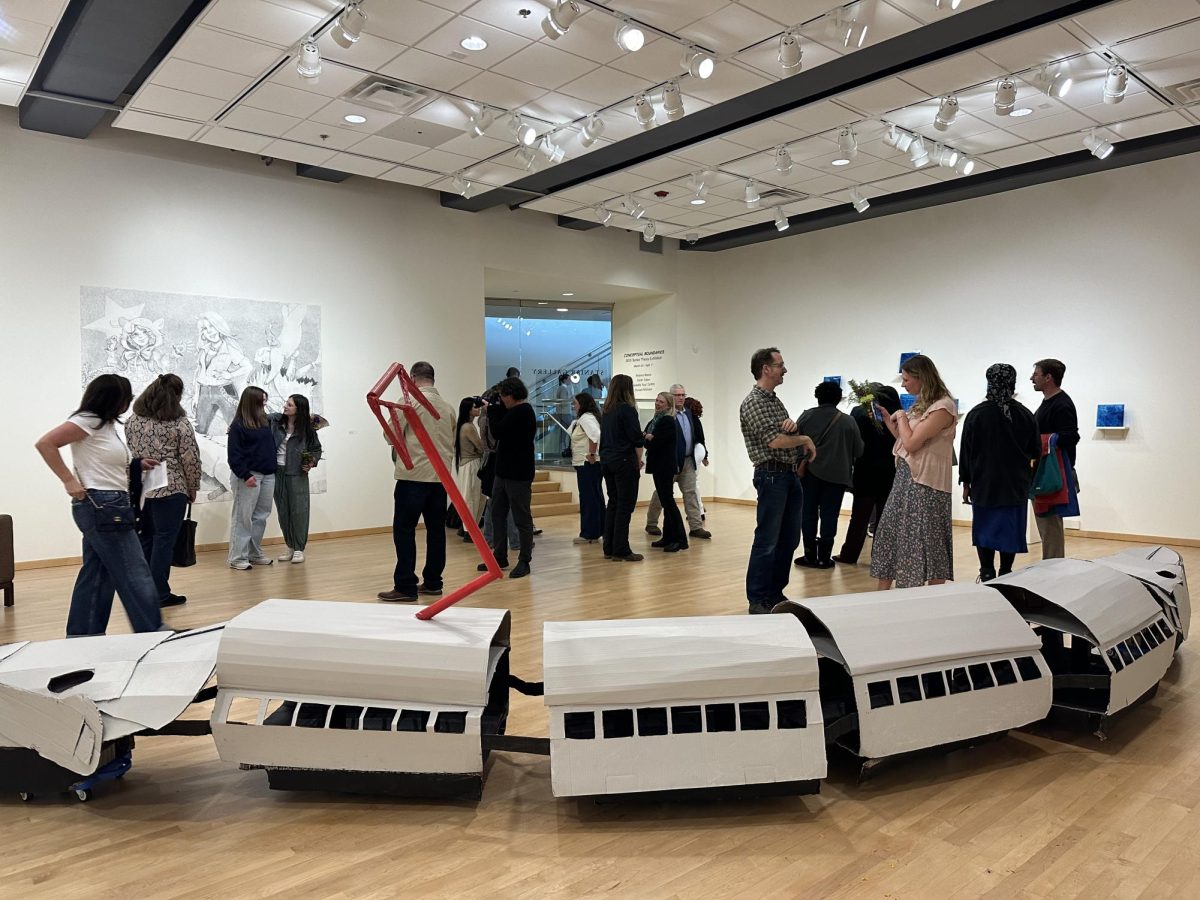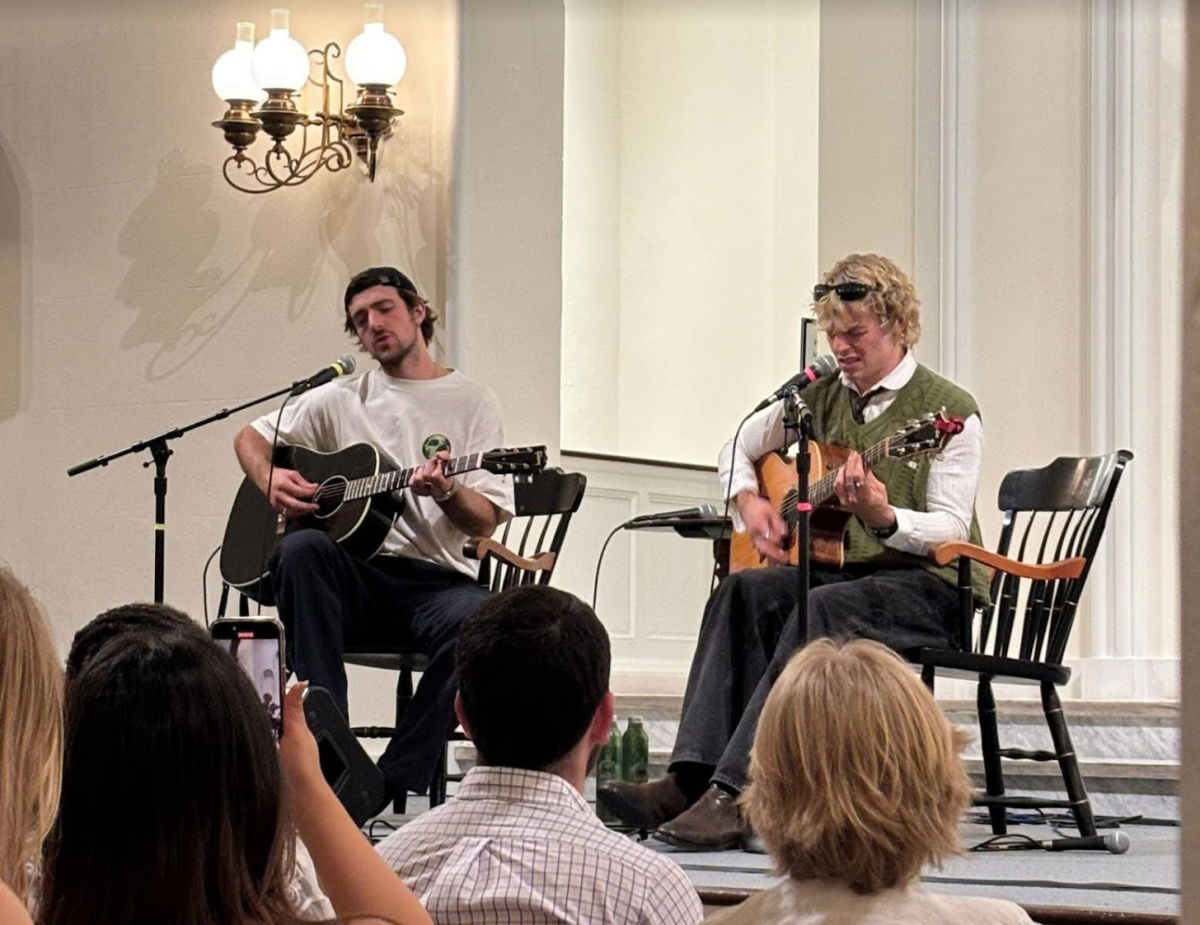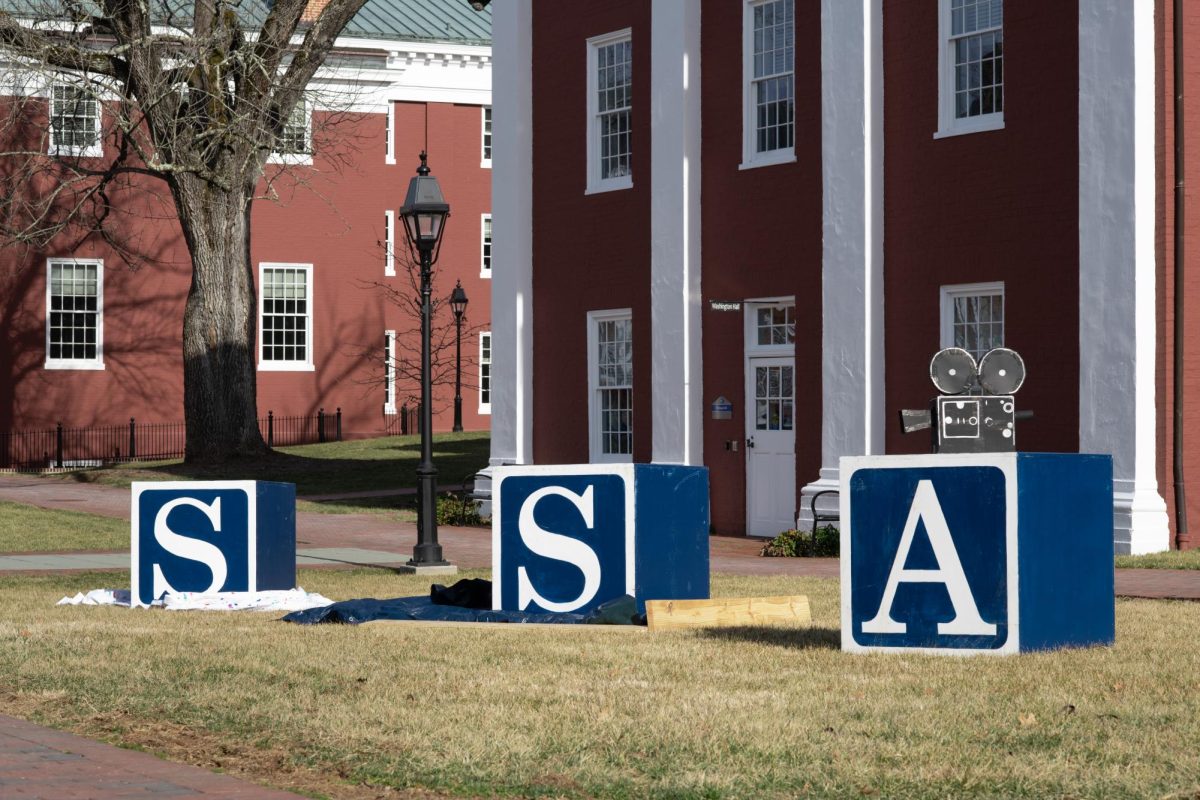Jamaal B. Sheats discussed his experiences as one of the few Black people in museum leadership in a Jan. 29 talk in Washington and Lee’s Northen Auditorium.
While Sheats described himself as wearing many hats in the art industry, most of his artistic endeavors take place at his alma mater, Fisk University. Fisk is a historically black university.
As the director and curator of Fisk University Galleries, Sheats is one of the few Black museum leaders in the country. Only 2.4% of museum leadership positions are held by racial minorities, said Director of Washington and Lee Museums Isra El-Beshir.
Since taking on the role of gallery director in 2015, Sheats has curated more than 19 art exhibitions, attracting over 50,000 visitors globally.
Sheats also established the Fisk University Galleries’ fellowship for postdoctoral scholars and the Fisk University Museum Leadership Program, a two year certificate program that aims to diversify art museum leadership by participating in a broader artistic alliance between museums at historically Black colleges and universities (HBCUs).
Sheats is also an associate provost and professor of art, and, most importantly, an artist working with painting and metal relief sculpture.
Sheats recently co-curated the renowned “African Modernism in America” exhibit. It was the first major U.S. traveling exhibition that sought to connect modern African artists, American patrons and cultural institutions in an examination of civil rights and decolonization.
The collection features 70 pieces made in the 1950s and 1960s by 50 different artists who challenge assumptions about African art. The exhibit started at Fisk University Galleries in Nashville, was in the Phillips Collection in Washington, D.C., and will be traveling to the Taft Museum of Art in Cincinnati, Ohio later in February.
Sheats said the exhibit’s main draw is that it recontextualizes what viewers thought African art was by bringing the changing relationships between the U.S. and African nations into focus.
“People thought they knew what African modernism was. They thought it was the traditional African objects, so it deconstructed that,” he said. “People don’t realize that these African American artists and HBCU were constantly in dialogue.”
The pieces are specifically chosen from decades that experienced dramatic social and political conditions for communities of Africans and African Americans. The 1950s-1960s were a time of decolonization and independence in Africa and a time of protest against segregation and advocating for civil rights in the American South.
During Sheats’ curation process, he said his goal is to advocate on the artist’s behalf, amplify their contributions and inspire.
“I hope that somebody will pick up the baton and continue with new and continued scholarship on this artist so we can get a holistic view of the world that we live in,” Sheats said.
Understanding the artist is especially important to Sheats, who calls himself an artist by trade.
Although he didn’t start his artistic journey until adulthood, Sheats said he discovered that he was able to retain information and understand emotion easier when he was drawing and observing art as a young child with ADHD and dyslexia.
“Standing in front of a Charles White painting as a young person, I remember staring at that painting and feeling this pressure behind my eyes before the tears began to come out,” Sheats said.
In 2003, he opened his own art gallery, the Sheats Repoussé in Nashville, as well as a mixed media studio.
To him, art is where he found his voice and is how the world communicates with him.
“At the end of the day,” Sheats said, “it was the only place where I felt like I was home.”









